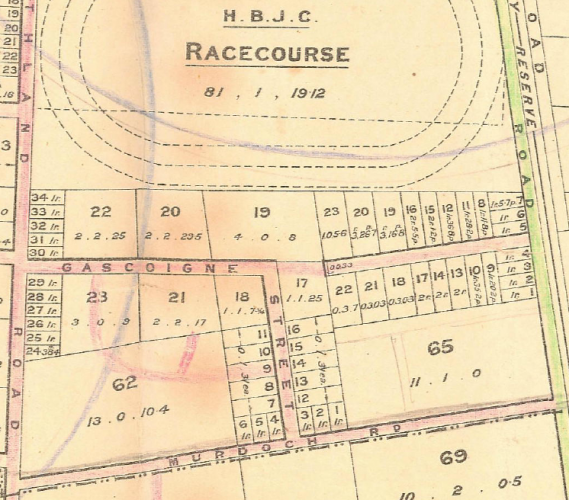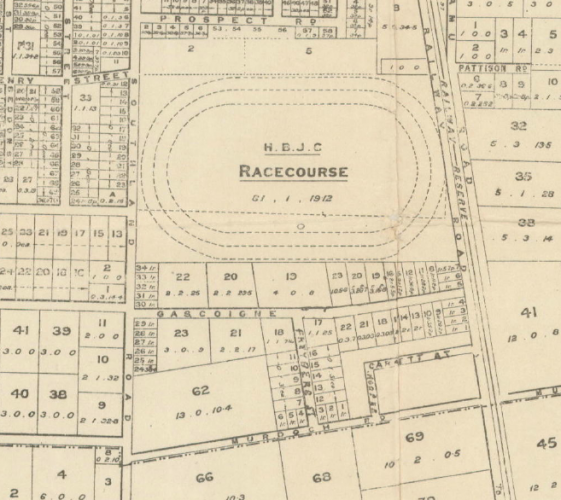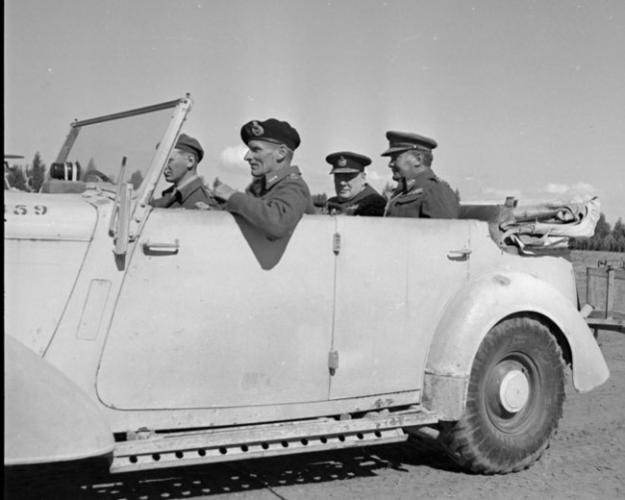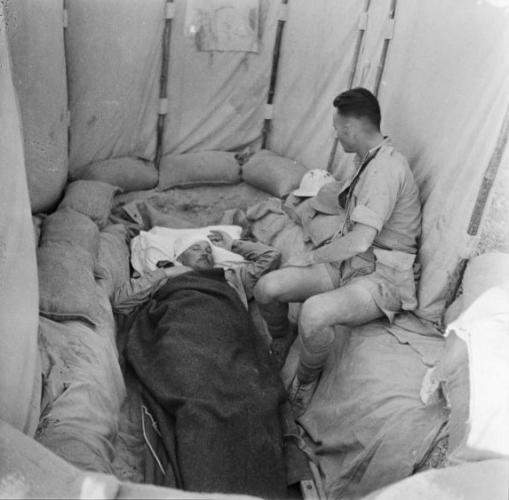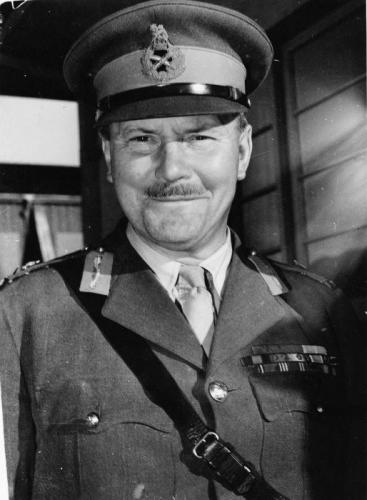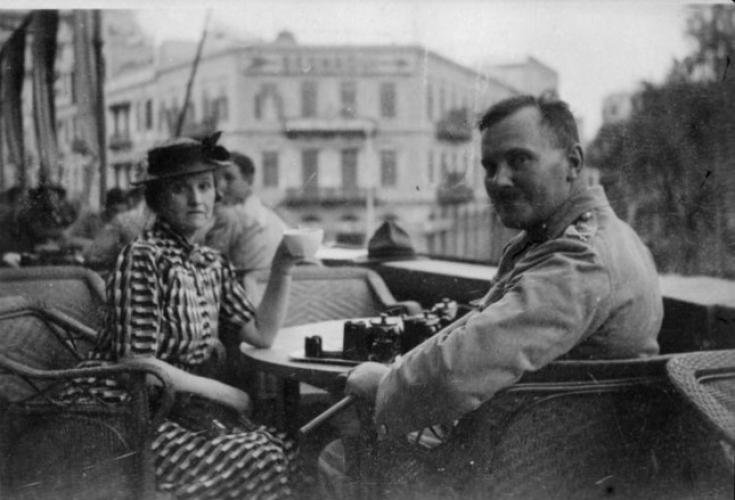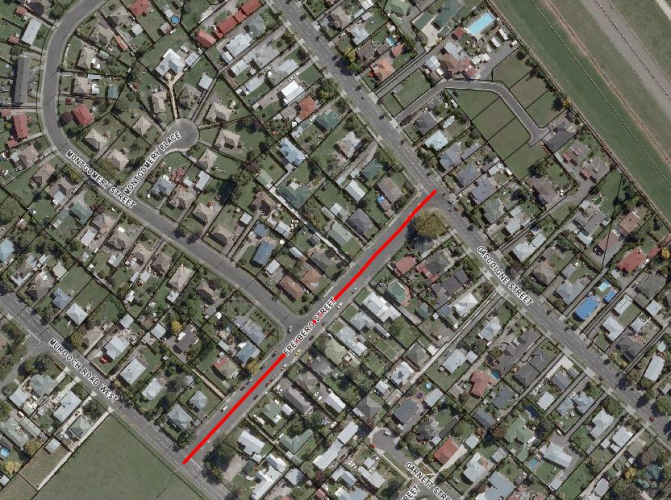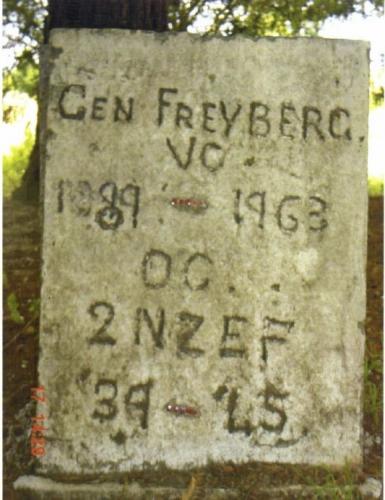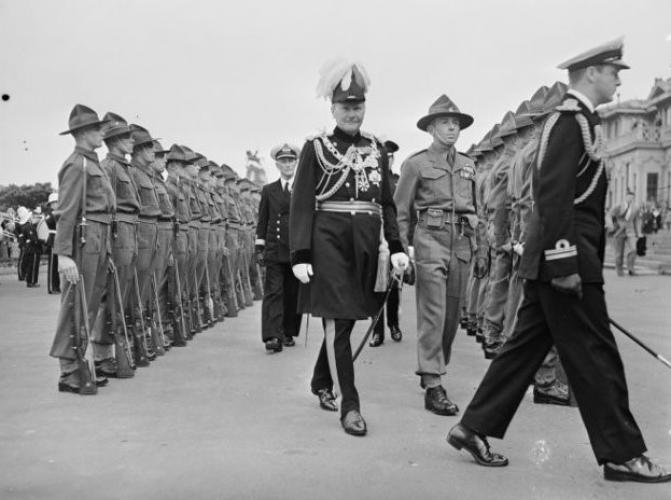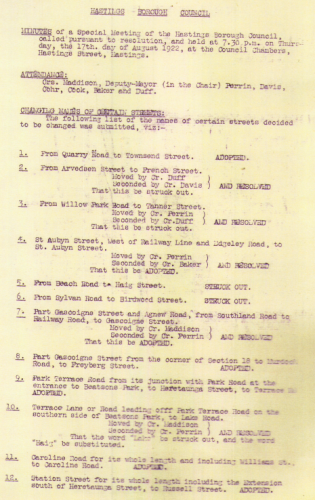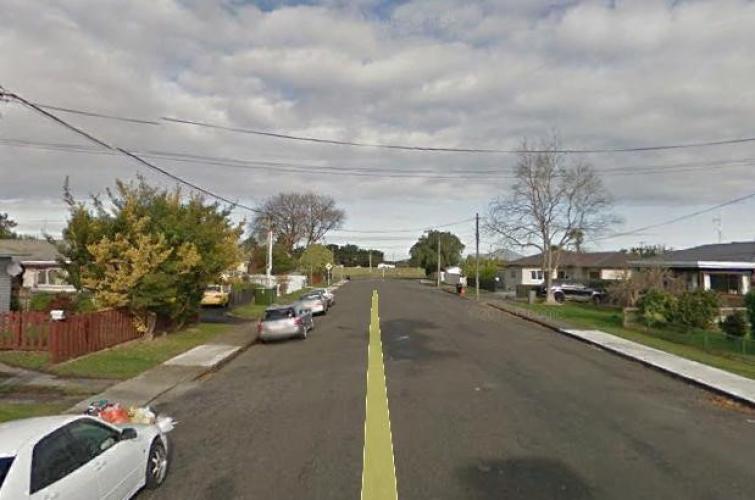047 Freyberg Street Hastings, street view
Reason for the name
The street was named shortly after WWI. General Freyberg was one of the most famous soldiers in the war, and highly decorated. After the war he stayed in England for some time as a staff officer in the 44th Division, but he visited New Zealand in 1921 as part of the convalescence from his many wounds. His ongoing connection with New Zealand was maintained and he became a New Zealand military leader in WWII and was later appointed Governor General.
Freyberg Street is located between Murdoch Road and Gascoigne Street in Hastings, close to the Hastings Racecourse. Montgomery Street runs between Gascoigne St and Freyberg St, and is believed to be named after Field Marshall Bernard Montgomery, who was in command of all Allied ground forces during Operation Overlord from the initial landings until after the Battle of Normandy. Freyberg was referred to by Montgomery as his best field commander, and they both were heavily involved in the successful battle of El Alamein in WWII, in October 1942.
Authors: Cherie Flintoff, Helen Gelletly HDC
Sir Bernard (Tiny) Cyril Freyberg (WWI) was born in London in 1889, immigrating to New Zealand with his parents James and Julia and other siblings when he was two years old. He was educated at Wellington College and became well known for his swimming prowess, winning the New Zealand junior and senior swimming titles.
During the First World War he became the youngest general in the British Army when promoted to the rank of temporary brigadier-general in April 1917, and was one of the most highly decorated British Empire soldiers of WWI. Early in the Gallipoli campaign he won a Distinguished Service Order (DSO) for swimming ashore and setting flares at Bulair (Bolayir). It was the evening of 24 April 1915 and the intention was to divert Turkish attention from the main landing.
In May 1916 Freyberg was transferred to the British Army as a captain in the Queen's (Royal West Surrey) Regiment. However, he remained with the 'Hood' Battalion as a seconded temporary major and went with them to France.
During the final stages of the Battle of the Somme, when commanding a battalion as a temporary lieutenant-colonel, he so distinguished himself in the capture of Beaucourt village that he was awarded the Victoria Cross. On 13 November 1916 at Beaucourt-sur-Ancre, France, after Freyberg's battalion had carried the initial attack through the enemy's front system of trenches, he rallied and re-formed his own much disorganised men and some others, and led them on a successful assault of the second objective, during which he suffered two wounds, but remained in command and held his ground throughout the day and the following night. When reinforced the next morning, he attacked and captured a strongly fortified village, taking 500 prisoners. Although wounded twice more, the second time severely, Freyberg refused to leave the line until he had issued final instructions. The citation for the award, published in the London Gazette in December 1916, describes the events concluding with:
“The personality, valour and utter contempt of danger on the part of this single Officer enabled the lodgment in the most advanced objective of the Corps to be permanently held, and on this point d'appui the line was eventually formed.”
By 1918 he had added two bars to his DSO, won the Victoria Cross through ‘splendid personal gallantry’, and been appointed a Companion tothe Most Distinguished Order of Saint Michael and Saint George (CMG). He was mentioned in dispatches on several occasions and by 1918 was recorded as having been wounded nine times.
Three of his brothers had also served in the war and two died: Oscar at Gallipoli in 1915 and Paul in France in 1917.
Winston Churchill, a personal friend of Freyberg, recorded that in the 1920s he asked to see his wounds, and counted twenty-seven separate scars and gashes. Another three recorded wounds would be added to the tally in WWII. He was well known for leading from the front, and Churchill is credited with calling him ‘the salamander of the British Empire’ for his ability to survive in fire.
On 14 June 1922 he married Barbara McLaren (a daughter of Sir Herbert Jekyll and the widow of the Honourable Francis McLaren) at St Martha on the Hill. Barbara had two children from her previous marriage; she and Freyberg later had a son, Paul (1923–1993).
During the Second World War he …was appointed to command the 2nd New Zealand Expeditionary Force and its fighting arm, the 2nd New Zealand Division. He led their campaigns in Greece, North Africa and Italy. Freyberg was criticised, particularly for his role in the fall of Crete in May 1941, and for the destruction of the Benedictine Monastery above Cassino in 1944. But he was also an admired figure at home and abroad, credited by his men for his concern for their welfare and his readiness to be at the forefront of any enemy action.
Field Marshall Bernard “Monty” Montgomery referred to Freyberg as “easily his best divisional commander” and he and his men were also held in high esteem as opponents. Rommel’s Chief of Staff wrote “Unfortunately the New Zealanders under Freyberg had escaped… This division… was among the elite of the British Army”.
During the Second World War he added a third bar to his DSO and was promoted to the rank of lieutenant general. He was also appointed a Knight Commander to the Most Excellent Order of the British Empire (KBE) and elevated to Knight Commander of the Most Honourable Order of the Bath (KCB). The latter was for his leadership of the New Zealand Division during the decisive second battle at El Alamein, which marked a major turning point in favour of the allied forces.
Following the war Freyberg was invited to be New Zealand's Governor-General. A popular choice for the post, he was New Zealand’s first Governor-General with a New Zealand upbringing. He left London on 3 May 1946, bringing with him material to assist in New Zealand government in its compilation of an official war history. He maintained a strong interest in the project during his term, which was extended from five to six years in light of an impending royal visit and other issues. He left New Zealand on 15 August 1952.
He later became Deputy Constable and Lieutenant-Governor of Windsor Castle. He was created a baron in 1951 and took the title Baron Freyberg of Wellington (NZ) and Munstead (in Surrey). He died in July 1963 at the age of 74 as a result of the rupture of a stomach wound from Gallipoli and is buried at St Martha-on-the-Hill Church, Surrey.
General Freyberg also has another memorial in Hastings District. In Pakowhai Country Park, Hastings, there is a concrete slab with an inscription commemorating Lieutenant General Bernard Cyril Freyberg, VC. This monument was made and put in place by Earle Lee, a voluntary caretaker for the park. He fought in North African deserts and admired General Freyberg.

